An Interdigital Electrode Probe for Detection, Localization and Evaluation of Surface Notch-Type Damage in Metals
Abstract
:1. Introduction
2. Probe Design
3. Detection Theory
4. Measurements Procedure
5. Result and Discussion
5.1. Scanning Detection
5.2. Orientation and Depth Detection
6. Conclusions
Acknowledgments
Author Contributions
Conflicts of Interest
References
- Ludwig, R.; Roberti, D. A nondestructive ultrasonic imaging system for detection of flaws in metal blocks. IEEE Trans. Instrum. Meas. 1989, 38, 113–118. [Google Scholar] [CrossRef]
- Bechou, L.; Dallet, D.; Danto, Y.; Danto, P.; Daponte, P.; Ousten, Y.; Rapuano, S. An improved method for automatic detection and location of defects in electronic components using scanning ultrasonic microscopy. IEEE Trans. Instrum. Meas. 2003, 52, 135–142. [Google Scholar] [CrossRef]
- Yun, T.G. Design and Implementation of Distributed measurement systems using fieldbus-based intelligent sensors. IEEE Trans. Instrum. Meas. 2001, 50, 1197–1202. [Google Scholar]
- Bernieri, A.; Ferrigno, L.; Laracca, M.; Molinara, M. Crack shape reconstruction in eddy current testing using machine learning systems for regression. IEEE Trans. Instrum. Meas. 2008, 57, 1958–1968. [Google Scholar] [CrossRef]
- Betta, G.; Ferrigno, L.; Laracca, M. GMR-based ECT instrument for detection and characterization of crack on a planar specimen. IEEE Trans. Instrum. Meas. 2012, 61, 505–512. [Google Scholar] [CrossRef]
- Kharkovsky, S.; Ryley, A.C.; Stephen, V.; Zoughi, R. Dual-polarized near-field microwave reflectometer for noninvasive inspection of carbon fiber reinforced polymer-strengthened structures. IEEE Trans. Instrum. Meas. 2008, 57, 168–175. [Google Scholar] [CrossRef]
- Zoughi, R.; Kharkovsky, S. Microwave and millimetre wave sensors for crack detection. Fatigue Fract. Eng. Mater. Struct. 2008, 31, 695–713. [Google Scholar] [CrossRef]
- Zarifi, M.H.; Deif, S.; Abdolrazzaghi, M.; Chen, B.; Ramsawak, D.; Amyotte, M.; Vahabisani, N.; Hashisho, Z.; Chen, W.X.; Daneshmand, M. A Microwave Ring Resonator Sensor for Early Detection of Breaches in Pipeline Coatings. IEEE Trans. Ind. Electron. 2018, 65, 1626–1635. [Google Scholar] [CrossRef]
- Albishi, A.; Ramahi, O.M. Detection of surface and subsurface cracks in metallic and non-metallic materials using a complementary split-ring resonator. Sensors 2014, 14, 19354–19370. [Google Scholar] [CrossRef] [PubMed]
- McClanahan, A.; Kharkovsky, S.; Maxon, A.R.; Zoughi, R.; Palmer, D.D. Depth Evaluation of Shallow Surface Cracks in Metals Using Rectangular Waveguides at Millimeter-Wave Frequencies. IEEE Trans. Instrum. Meas. 2010, 59, 1693–1704. [Google Scholar] [CrossRef]
- Albishi, A.M.; Boybay, M.S.; Ramahi, O.M. Complementary Split-Ring Resonator for Crack Detection in Metallic Surfaces. IEEE Microw. Wirel. Compon. Lett. 2012, 22, 330–332. [Google Scholar] [CrossRef]
- Mazlumi, F.; Gharanfeli, N.; Sadeghi, S.H.H.; Moini, R. An open-ended substrate integrated waveguide probe for detection and sizing of surface cracks in metals. NDT E Int. 2012, 53, 36–38. [Google Scholar] [CrossRef]
- Ahanian, I.; Sadeghi, S.H.H.; Moini, R. An array waveguide probe for detection, location and sizing of surface cracks in metals. NDT E Int. 2015, 70, 38–40. [Google Scholar] [CrossRef]
- Alibishi, A.M.; Ramashi, O.M. Microwaves-Based High Sensitivity Sensors for Crack Detection in Metallic Materials. IEEE Trans. Microw. Theory Tech. 2017, 65, 1864–1872. [Google Scholar] [CrossRef]
- Gao, B.; Woo, W.L.; Tian, G.Y.; Zhang, H. Unsupervised Diagnostic and Monitoring of Defects Using Waveguide Imaging with Adaptive Sparse Representation. IEEE Trans Ind. Inform. 2016, 12, 406–416. [Google Scholar] [CrossRef]
- Ali, A.; Hu, B.; Ramahi, O.M. Intelligent detection of cracks in metallic surfaces using a waveguide sensor loaded with metamaterial elements. Sensors 2015, 15, 11402–11416. [Google Scholar] [CrossRef] [PubMed]
- Gao, B.; Zhang, H.; Woo, W.L.; Tian, G.Y.; Bai, L.; Yin, A. Smooth Nonnegative Matrix Factorization for Defect Detection Using Microwave Nondestructive Testing and Evaluation. IEEE Trans. Instrum. Meas. 2014, 63, 923–934. [Google Scholar] [CrossRef]
- Yang, S.H.; Kim, K.B.; Kang, J.S. Detection of surface crack in film-coated metals using an open-ended coaxial line sensor and dual microwave frequencies. NDT E Int. 2013, 54, 91–95. [Google Scholar]
- Mirala, A.; Shirazi, R.S. Detection of surface cracks in metals using time-domain microwave non-destructive testing technique. IET Microwav. Antennas Propag. 2017, 11, 564–569. [Google Scholar] [CrossRef]
- Yang, R.Y.; Weng, M.H.; Hung, C.Y.; Chen, H.J.; Houng, M.P. Novel compact microstrip interdigital bandstop filters. IEEE Trans. Ultrason. Ferroelectr. Freq. Control 2004, 51, 1022–1025. [Google Scholar] [CrossRef] [PubMed]
- Sam, S.; Kang, H.; Lim, S. Frequency Reconfigurable and Miniaturized Substrate Integrated Waveguide Interdigital Capacitor (SIW-IDC) Antenna. IEEE Trans. Antennas Propag. 2014, 62, 1039–1045. [Google Scholar] [CrossRef]
- Bao, X.; Ocket, I.; Kil, D.; Bao, J.; Puers, R.; Nauwelaers, B. Liquid measurements at microliter volumes using 1-port coplanar. In Proceedings of the 2017 First IEEE MTT-S International Microwave Bio Conference (IMBIOC), Gothenburg, Sweden, 15–17 May 2017; pp. 1–4. [Google Scholar]
- Alcantara, G.P.; Andrade, C.G.M. A short review of gas sensors based on interdigital electrode. In Proceedings of the 2015 IEEE 12th International Conference on Electronic Measurement & Instruments, Qingdao, China, 16–18 July 2015; pp. 1616–1621. [Google Scholar]
- Abdullah, B.M.; Cullen, J.; Mason, A.; Al-Shamma’a, A.I. A Novel Method for Monitoring Structural Metallic Materials Using Microwave NDT. In Sensing Technology Current Status and Future Trends I; Springer International Publishing: Berlin, Germany, 2014; Volume 7, pp. 161–180. [Google Scholar]
- Lancaster, M.J.; Huang, F.; Porch, A.; Avenhaus, B.; Hong, J.-S.; Hung, D. Miniature Superconducting Filters. IEEE Trans. Microw. Theory Tech. 1996, 44, 1339–1346. [Google Scholar] [CrossRef]
- Aboush, Z.; Porch, A. Compact, Narrow Bandwidth, Lumped Element Bandstop Resonators. IEEE Microw. Wirel. Compon. Lett. 2005, 15, 524–526. [Google Scholar] [CrossRef]
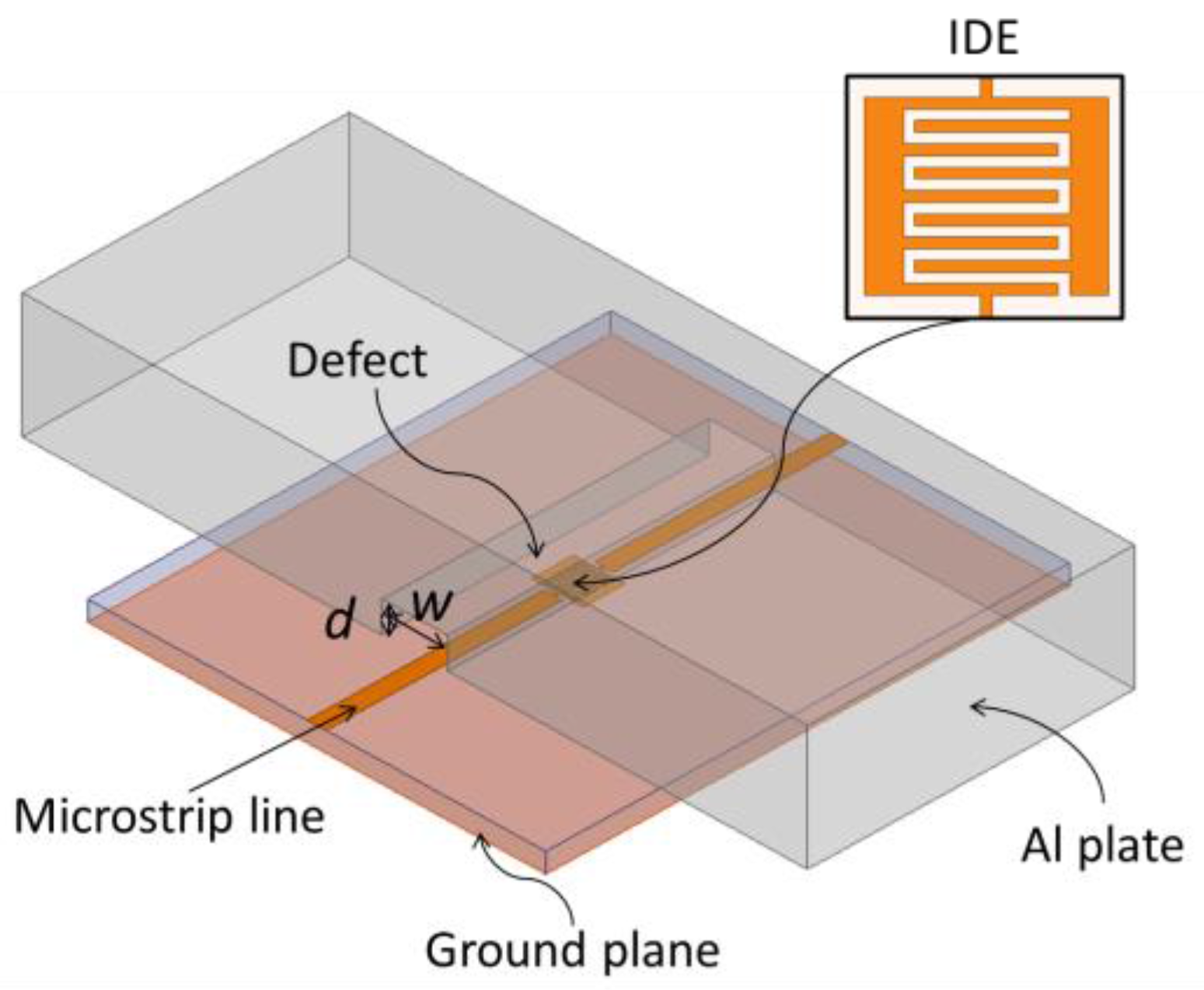

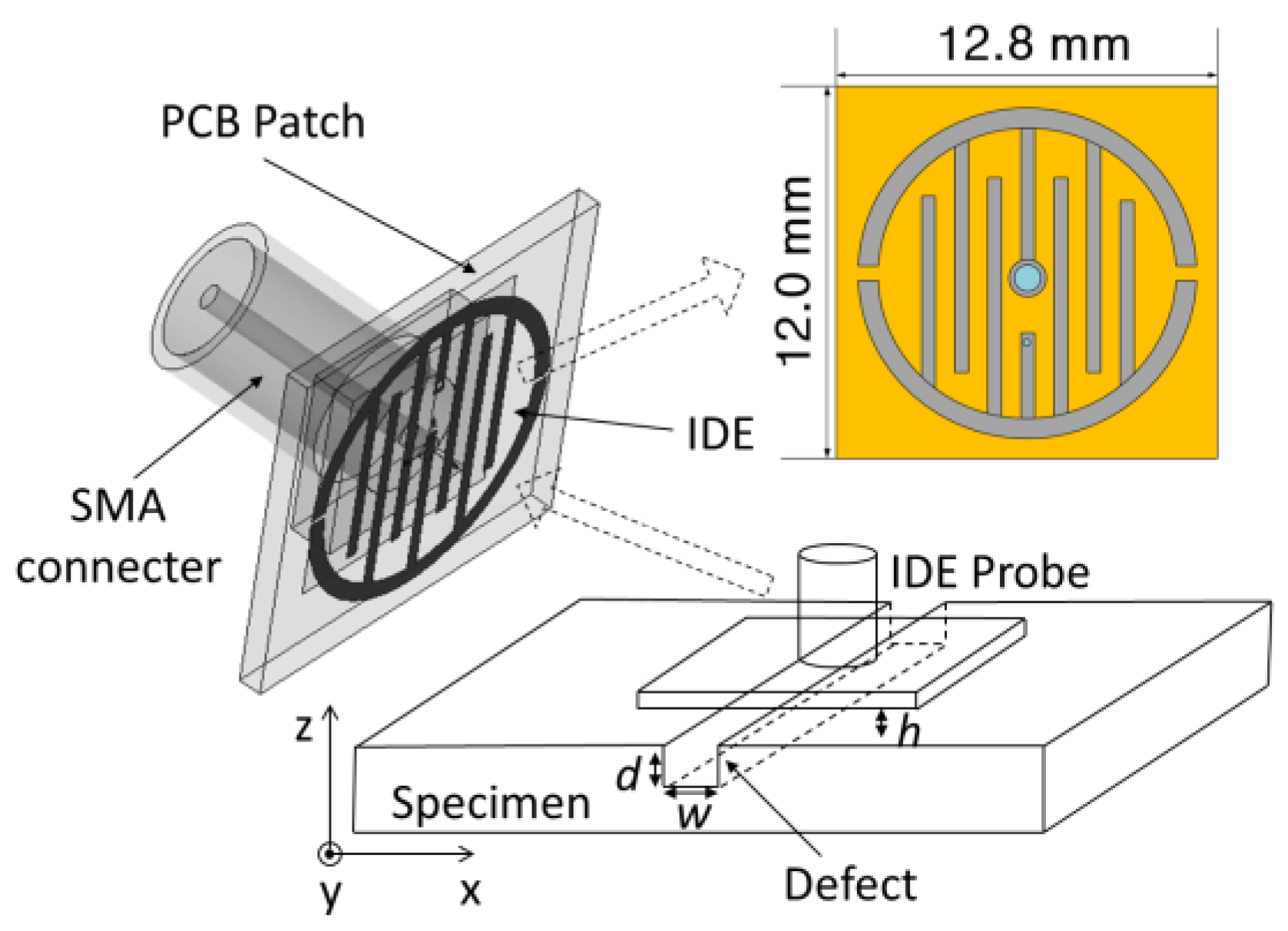
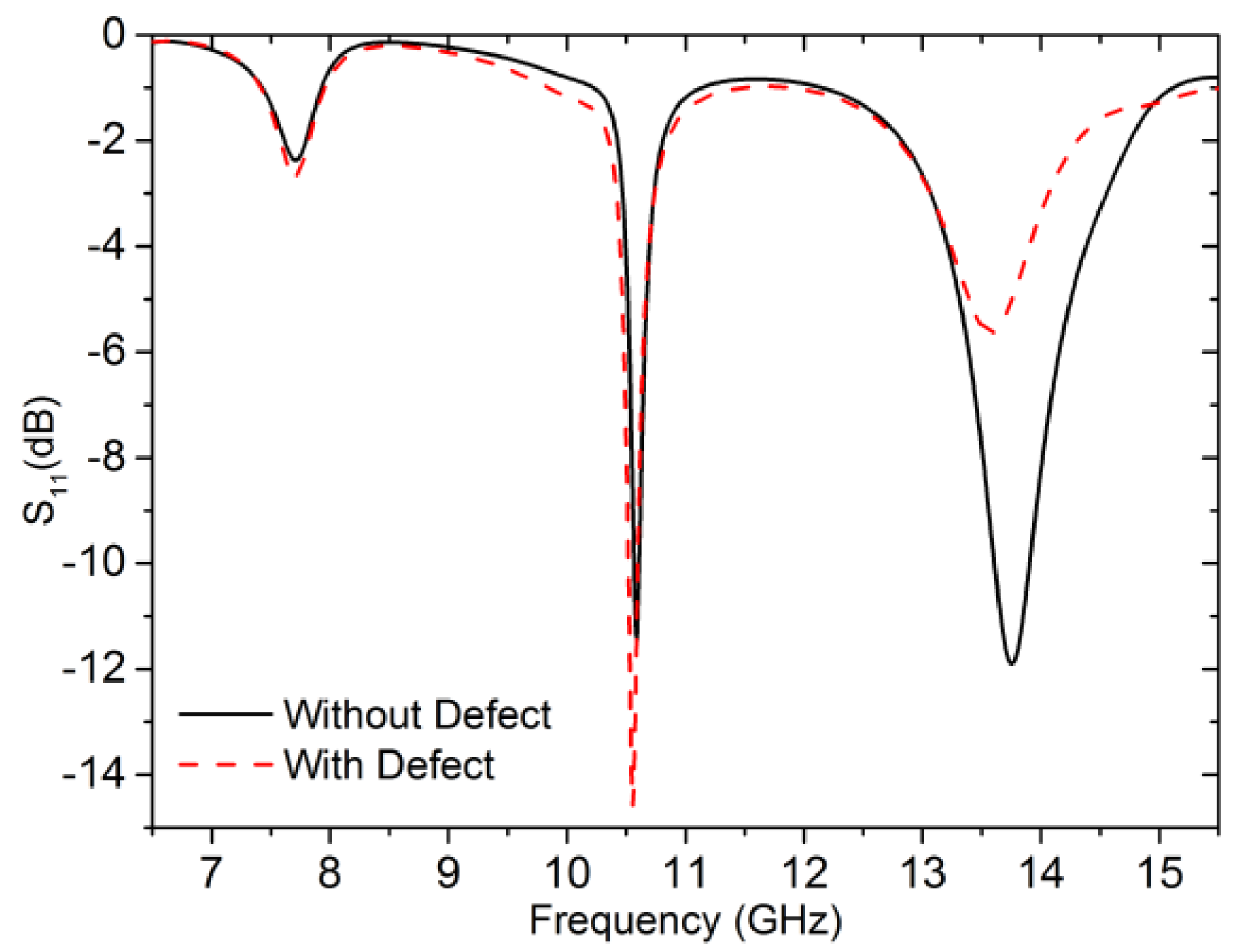
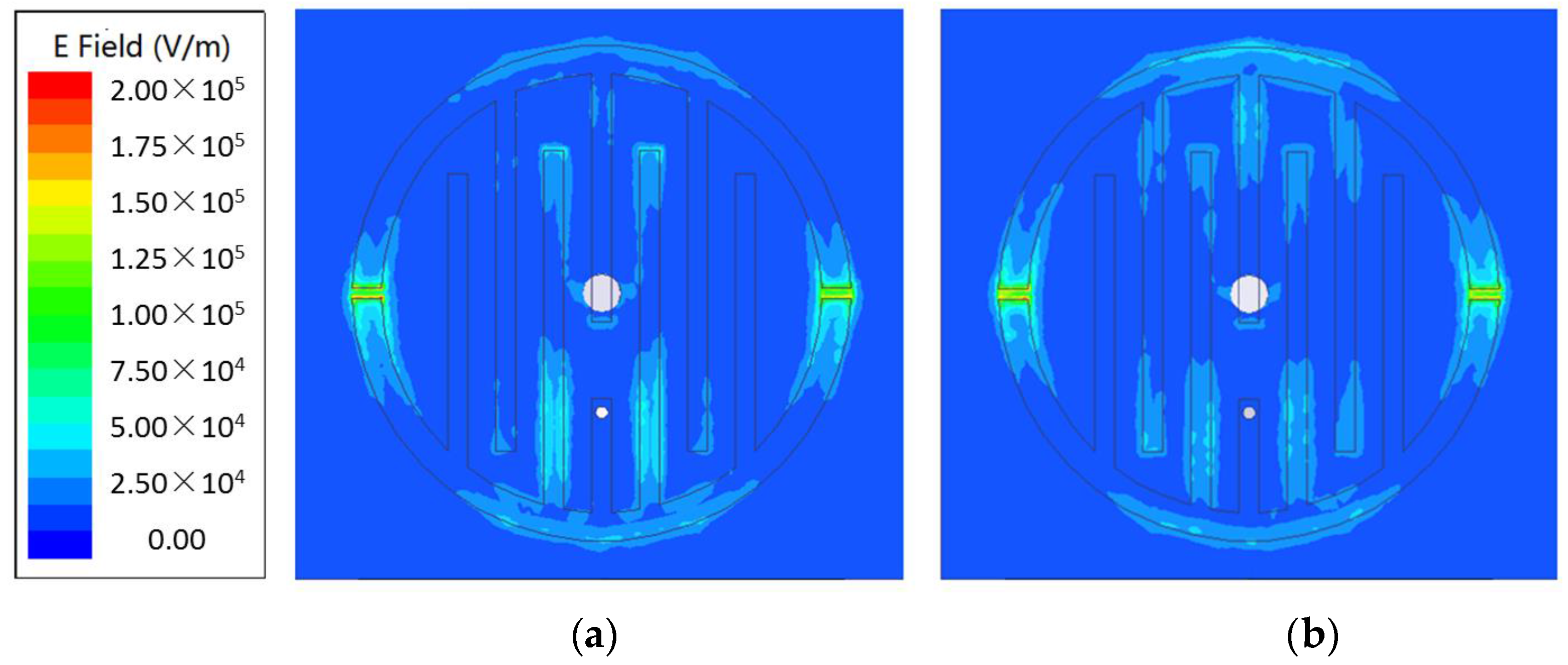
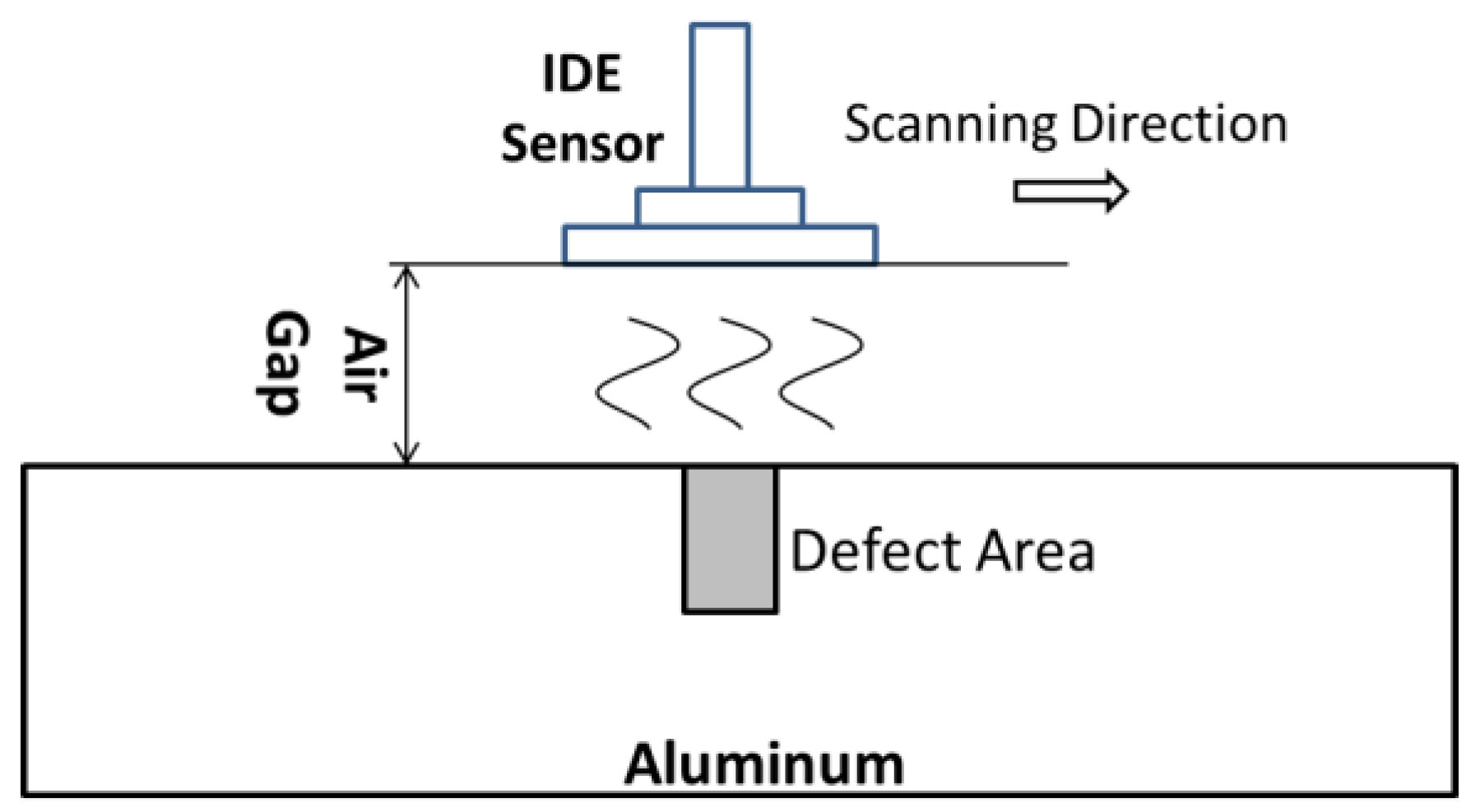
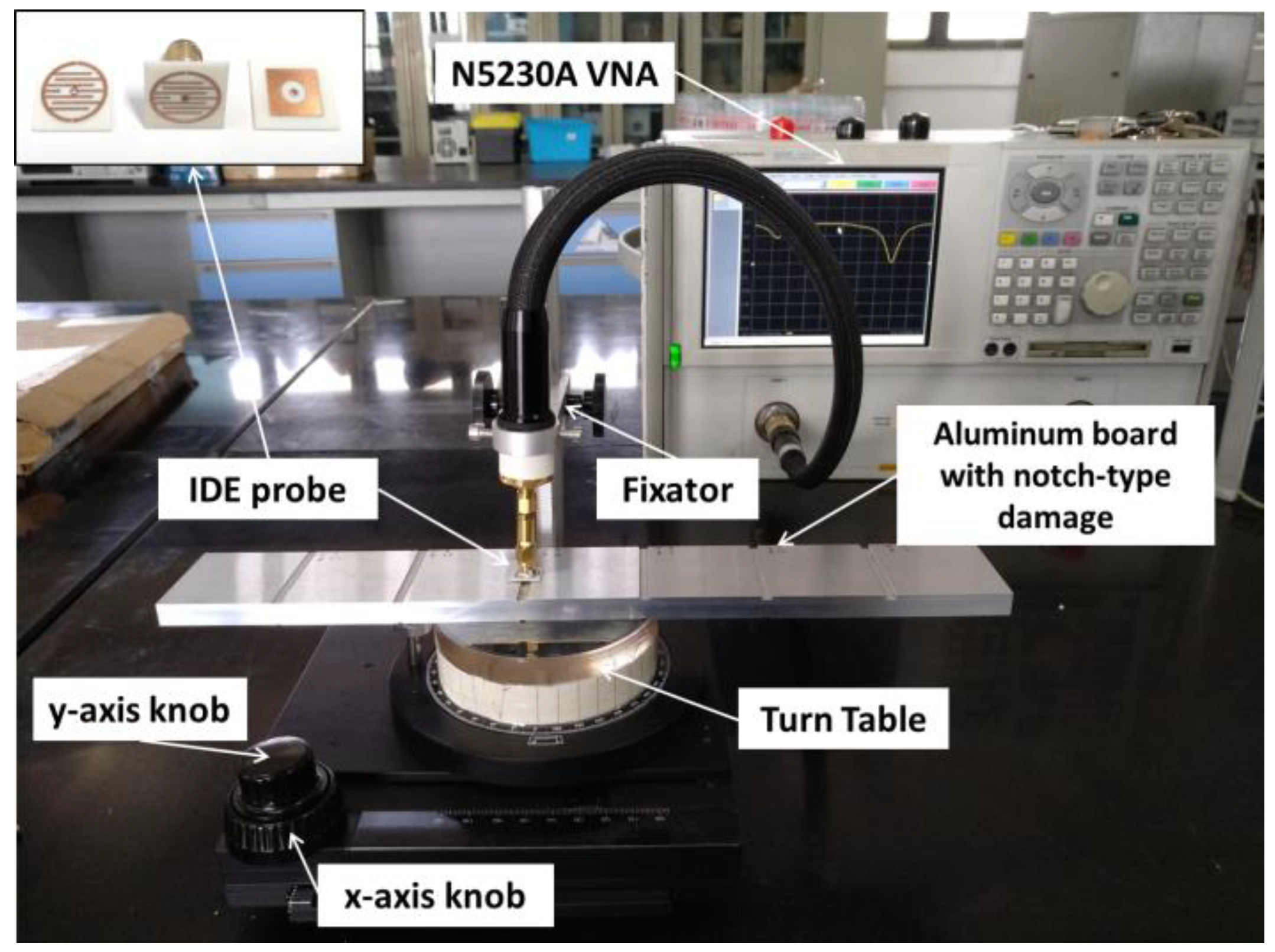

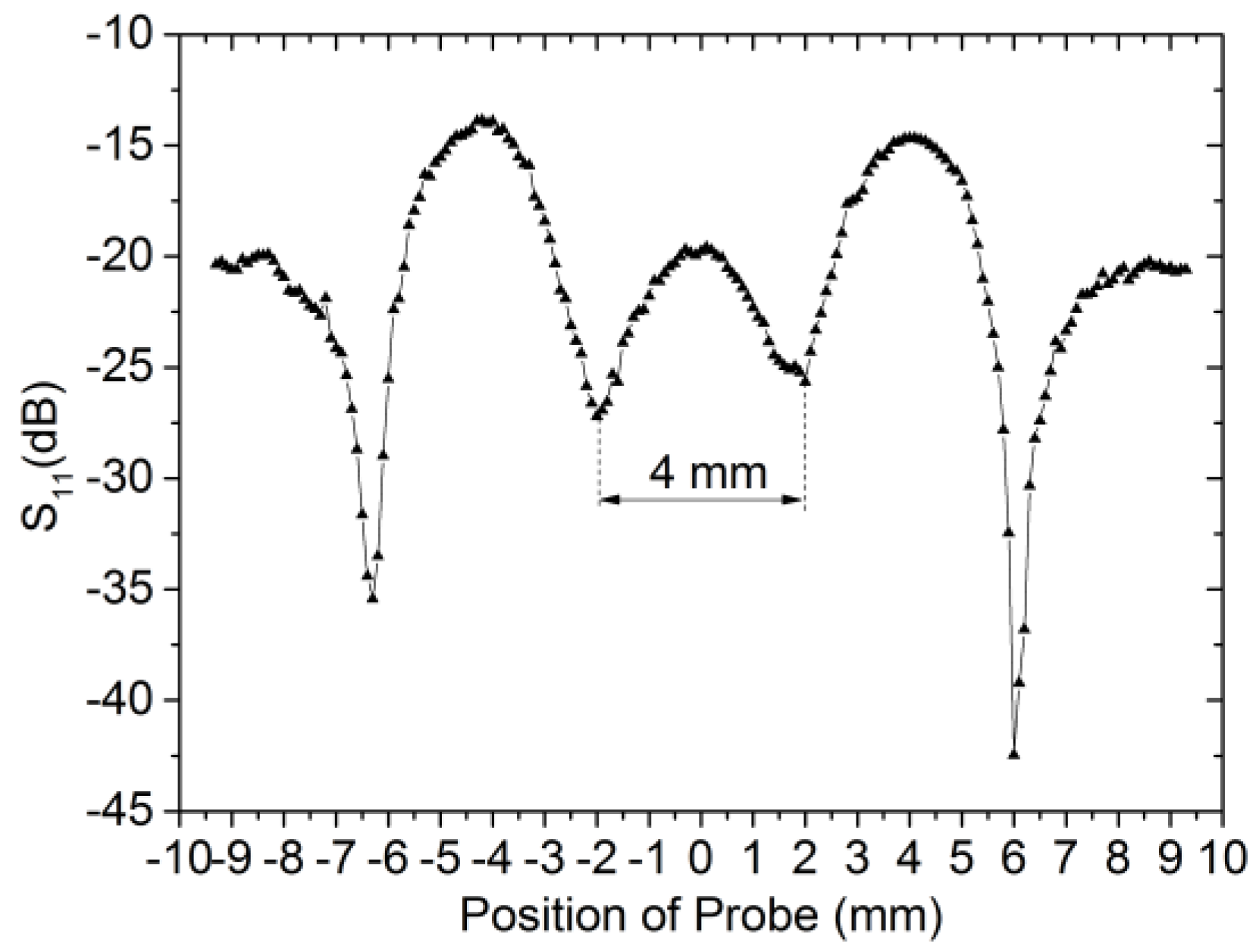

| Actual Width (mm) | Measured Value (mm) | Relative Error |
|---|---|---|
| 3.0 | 3.2 | 6.7% |
| 2.4 | 2.6 | 8.3% |
| 1.8 | 2.0 | 11.1% |
| 1.2 | 0.8 | 33.3% |
© 2018 by the authors. Licensee MDPI, Basel, Switzerland. This article is an open access article distributed under the terms and conditions of the Creative Commons Attribution (CC BY) license (http://creativecommons.org/licenses/by/4.0/).
Share and Cite
Li, L.; Yang, X.; Yin, Y.; Yuan, J.; Li, X.; Li, L.; Huang, K. An Interdigital Electrode Probe for Detection, Localization and Evaluation of Surface Notch-Type Damage in Metals. Sensors 2018, 18, 371. https://doi.org/10.3390/s18020371
Li L, Yang X, Yin Y, Yuan J, Li X, Li L, Huang K. An Interdigital Electrode Probe for Detection, Localization and Evaluation of Surface Notch-Type Damage in Metals. Sensors. 2018; 18(2):371. https://doi.org/10.3390/s18020371
Chicago/Turabian StyleLi, Lanshuo, Xiaoqing Yang, Yang Yin, Jianping Yuan, Xu Li, Lixin Li, and Kama Huang. 2018. "An Interdigital Electrode Probe for Detection, Localization and Evaluation of Surface Notch-Type Damage in Metals" Sensors 18, no. 2: 371. https://doi.org/10.3390/s18020371






